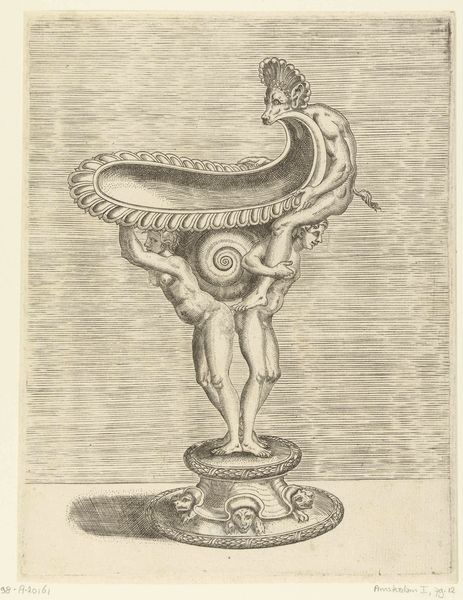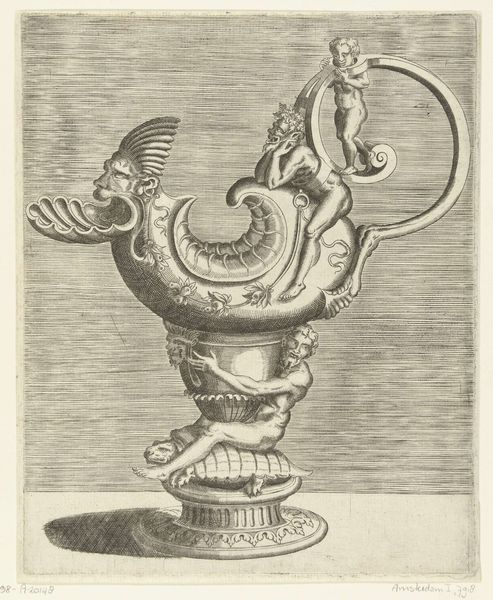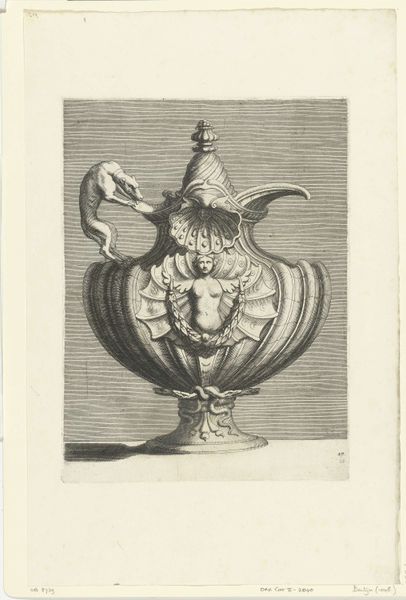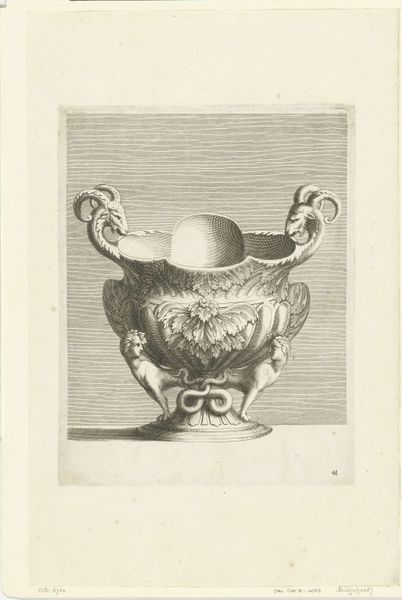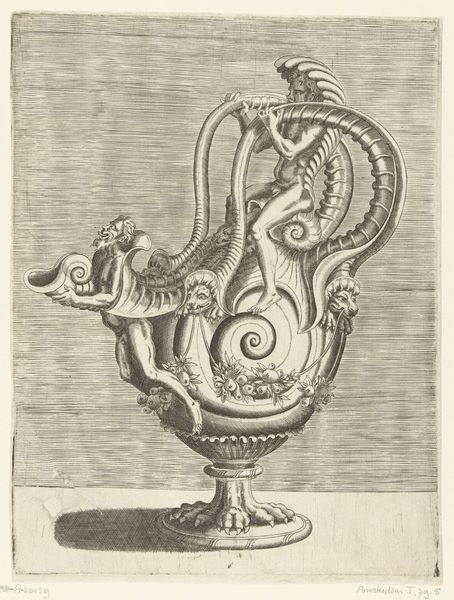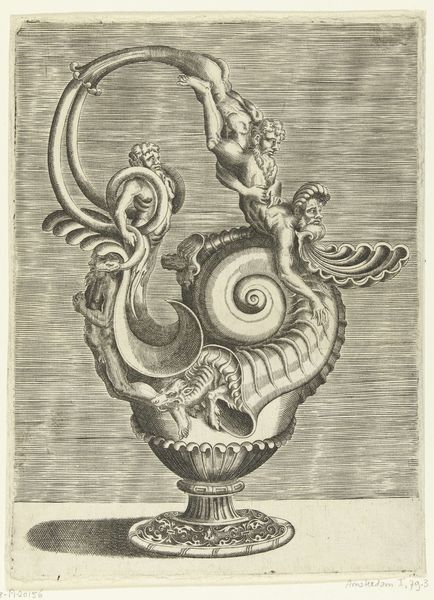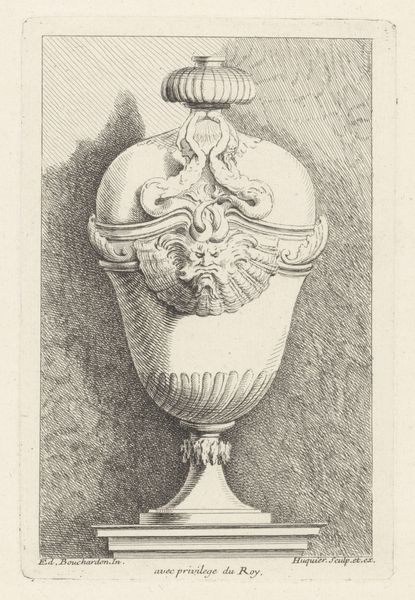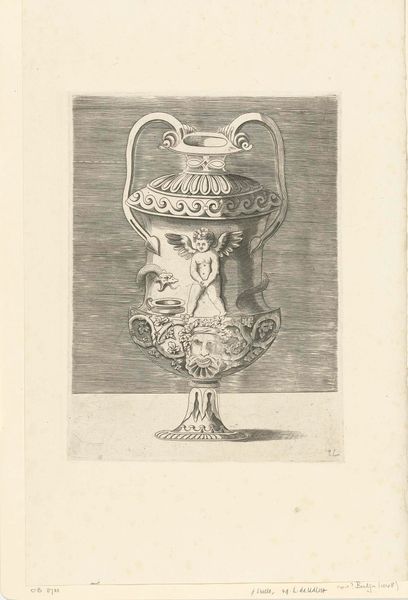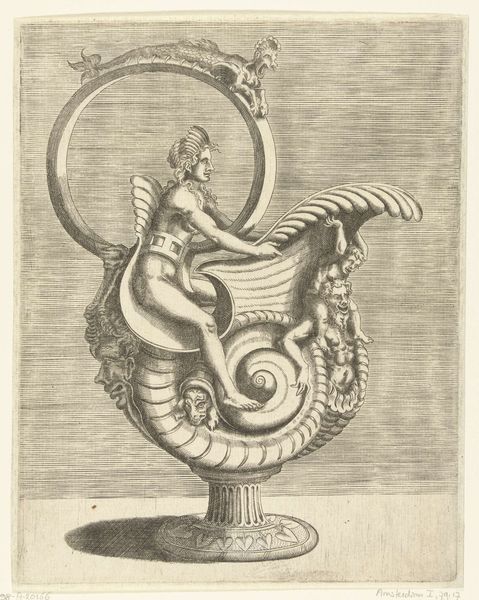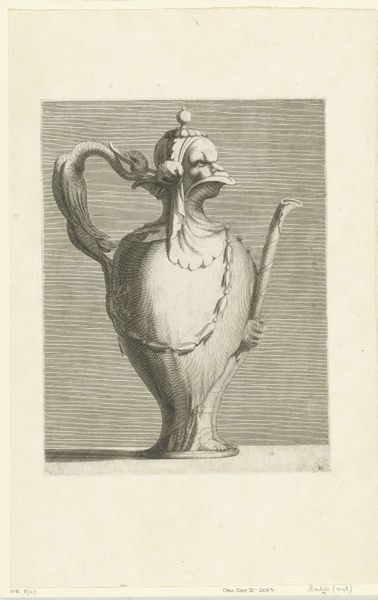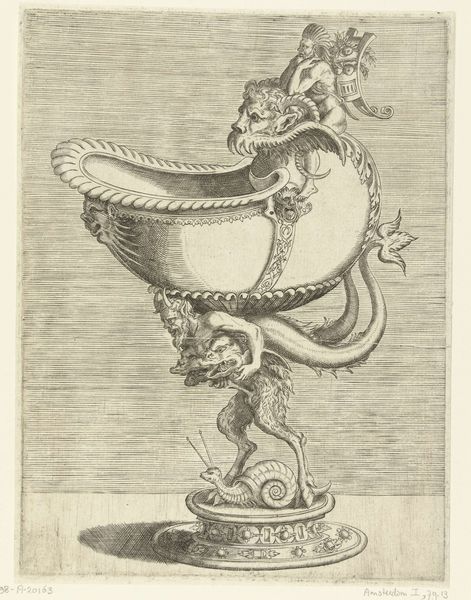
drawing, print, etching, engraving
#
drawing
#
baroque
# print
#
etching
#
old engraving style
#
caricature
#
figuration
#
engraving
Dimensions: height 276 mm, width 203 mm
Copyright: Rijks Museum: Open Domain
Editor: This etching from 1657, by Françoise Bouzonnet, depicts a vessel adorned with a satyr child. There's a strange duality about it, blending high art with an almost grotesque caricature. What catches your eye when you look at it? Curator: Immediately, I see a tension between luxury and labor. The image presents itself as a refined object, a "schenkkan" – a ewer. Yet, look closely at the lines; the printmaking process itself involved physical work, repetitive actions, a certain 'craft' aesthetic. Do you think Bouzonnet's choice of etching, a relatively accessible printmaking method, challenges the elite status often associated with the Baroque style? Editor: That’s a good point. The medium feels almost deliberately… common? But how would that relate to the vessel itself? Is it making a statement about accessibility of art objects to a wider audience? Curator: Precisely. Etchings allowed for wider distribution and, arguably, democratized images. Now, consider the figure – a chubby satyr, grasping his belly. He is part of the ewer, an ornament and structural support at once. Isn’t that a commentary on how labor, even exploited or ‘base’ labor, is integral to the creation of these lavish goods? We consume without necessarily thinking of the means of production. Editor: I never thought of it that way, about the labor! So, it’s almost as if Bouzonnet is using the imagery of classical art and subversive humor to actually reveal a more complex story of how goods are created. Curator: Exactly. It's not just about beauty or classical allusion, but also the social conditions and material processes intertwined with art production. Editor: That's fascinating. I'll definitely look at art from this perspective from now on; not just at 'what' is represented, but how and even why it was made. Curator: And consider the economic landscape it reflects! It might offer a new approach to appreciate art, viewing it not merely as an object of aesthetic admiration but as a product shaped by complex human interaction and resource management.
Comments
No comments
Be the first to comment and join the conversation on the ultimate creative platform.
